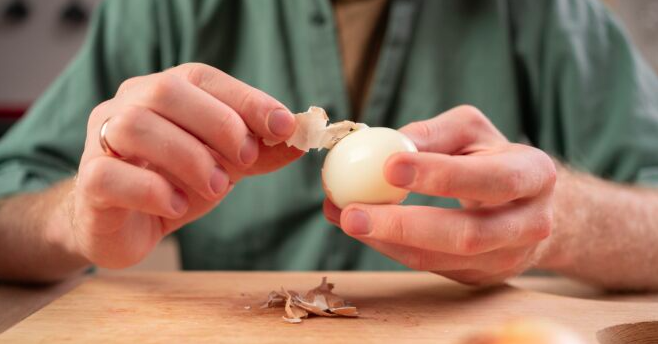We’ve all been there—you’re about to make breakfast, you crack an egg, and an awful smell fills the air. Instead of playing a risky game of “Is this egg still good?” you can rely on a simple trick: decoding the numbers on the egg carton. These hidden codes tell you exactly how fresh your eggs are and where they came from.
Eggs are a kitchen essential, whether you enjoy them scrambled, fried, poached, or baked into your favorite treats. But did you know that the numbers printed on the egg carton hold the key to ensuring you get the freshest eggs possible? Let’s crack the code!
Decoding the Julian Date
One of the most important codes on an egg carton is the Julian date—a three-digit number that tells you the exact day the eggs were packaged.
- 001 represents January 1st
- 365 represents December 31st
For example, if you see 045, that means the eggs were packaged on February 14th. This simple system lets you gauge how fresh your eggs are before you buy them.
Understanding the Plant Code
Next to the Julian date, you’ll often find a plant code, which starts with a “P” followed by four digits (e.g., P1234). This code identifies the facility where the eggs were processed and packaged.
This is especially useful in case of a recall—you can check the plant code on the FDA’s Egg Safety website to see if your eggs are affected.
Why These Codes Matter
Understanding these numbers helps you make better purchasing decisions:
- Eggs stay fresh for 4-5 weeks after packaging.
- The USDA allows eggs to be sold up to 30 days after packaging, meaning some eggs are already weeks old before you buy them.
- The higher the Julian number, the fresher the eggs!
- Comparing the Julian date and the sell-by date ensures you’re getting the freshest eggs available.
The Downsides of Older Eggs
Eggs don’t immediately spoil after their expiration date, but they do change in quality over time:
- They lose moisture and carbon dioxide, making the yolks more fragile and the whites runnier.
- The risk of foodborne illness increases, especially if eggs aren’t stored properly.
- Fresh eggs taste better and perform better in cooking and baking.
While older eggs might still be safe, fresher is always better—especially for dishes like omelets, poached eggs, or meringues, where texture is key.
How to Store Eggs Properly
To keep your eggs fresh longer, follow these tips:
- Keep eggs in their original carton to protect them from absorbing odors.
- Store eggs in the coldest part of the fridge, not on the door where temperatures fluctuate.
- Use eggs within 3-5 weeks for the best taste and texture.
How to Tell If an Egg Is Bad
If you’re unsure whether an egg is still good, try these simple tests:
The Float Test:
- Fill a bowl with water and gently place the egg inside.
- Fresh eggs sink and lay flat.
- Slightly older eggs stand upright.
- Bad eggs float due to increased air inside the shell.
The Crack Test:
- Crack the egg into a bowl.
- Fresh eggs have firm, round yolks and thick whites.
- Older eggs have flatter yolks and runnier whites.
- If it smells bad—toss it out!
Tips for Buying the Freshest Eggs
According to the Egg Safety Center, here’s what to look for:
- Choose eggs from a refrigerated section.
- Inspect the carton for cracks or dirt.
- Look for the USDA Grade shield, which ensures quality.
- Buy only what you need—don’t stock up on too many eggs at once.
Creative Ways to Use Eggs Before They Expire
If you find yourself with a carton of eggs that are close to expiring, don’t waste them! Here are some delicious ways to use them up:
- Quiche – A savory, cheesy dish perfect for brunch.
- Shakshuka – Poached eggs in a spiced tomato sauce.
- Homemade pasta – Fresh pasta uses up several eggs and tastes amazing.
- Breakfast burritos – Scrambled eggs wrapped with veggies and cheese.
- Pound cake – A rich, buttery treat.
- Crème brûlée – A creamy custard with a caramelized top.
- French toast – A perfect way to use slightly older eggs.
- Soufflé – Light, airy, and delicious.
- Egg muffins – Great for meal-prepping breakfast.
Final Thoughts
Next time you’re grocery shopping, take a moment to check the Julian date, plant code, and overall quality of the eggs before adding them to your cart. This simple habit can ensure you get the freshest, tastiest eggs possible!
Did you already know the meaning behind these codes? Share this with your friends and family so they can crack the mystery, too!

Sophia Reynolds is a dedicated journalist and a key contributor to Storyoftheday24.com. With a passion for uncovering compelling stories, Sophia Reynolds delivers insightful, well-researched news across various categories. Known for breaking down complex topics into engaging and accessible content, Sophia Reynolds has built a reputation for accuracy and reliability. With years of experience in the media industry, Sophia Reynolds remains committed to providing readers with timely and trustworthy news, making them a respected voice in modern journalism.


